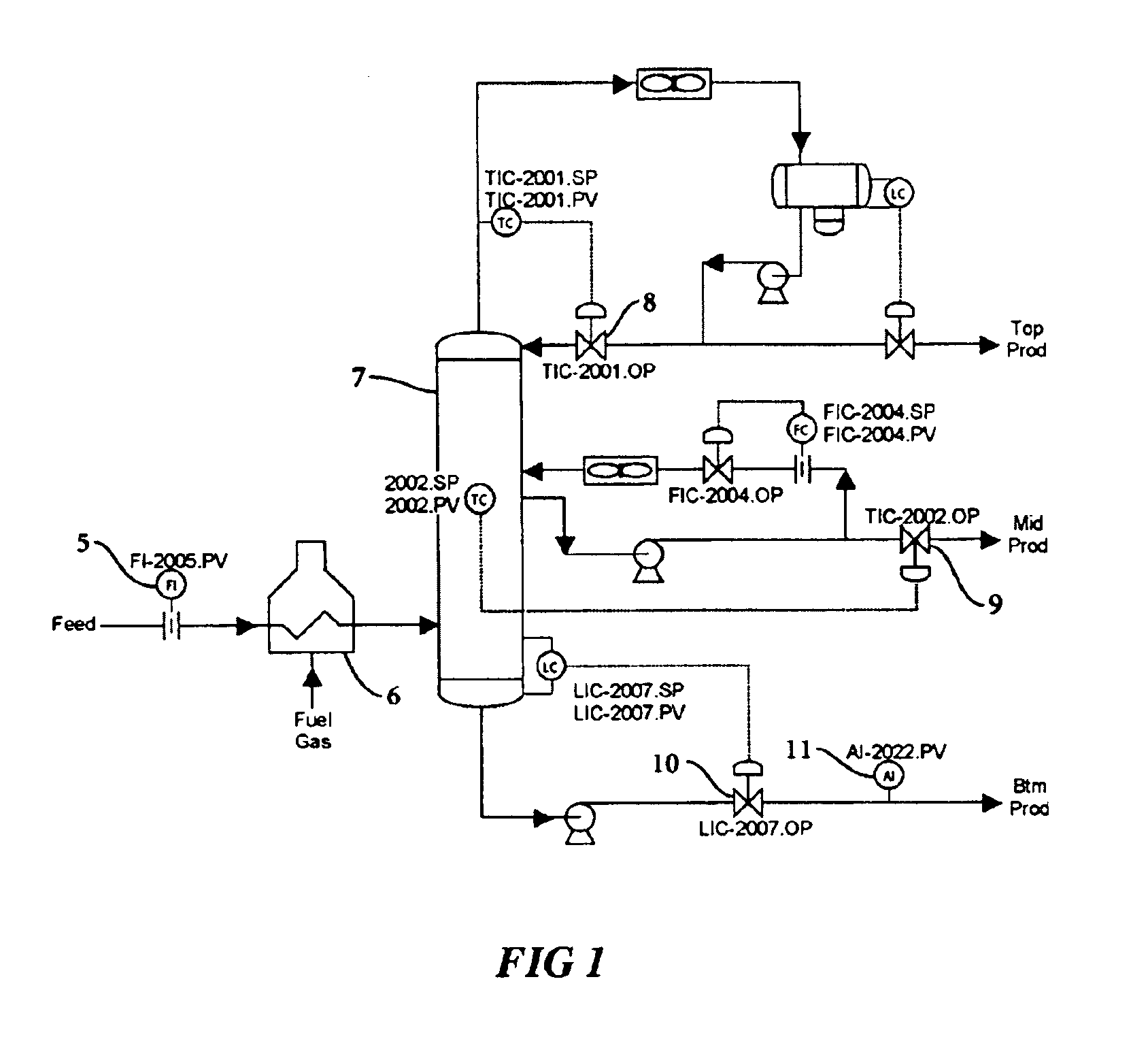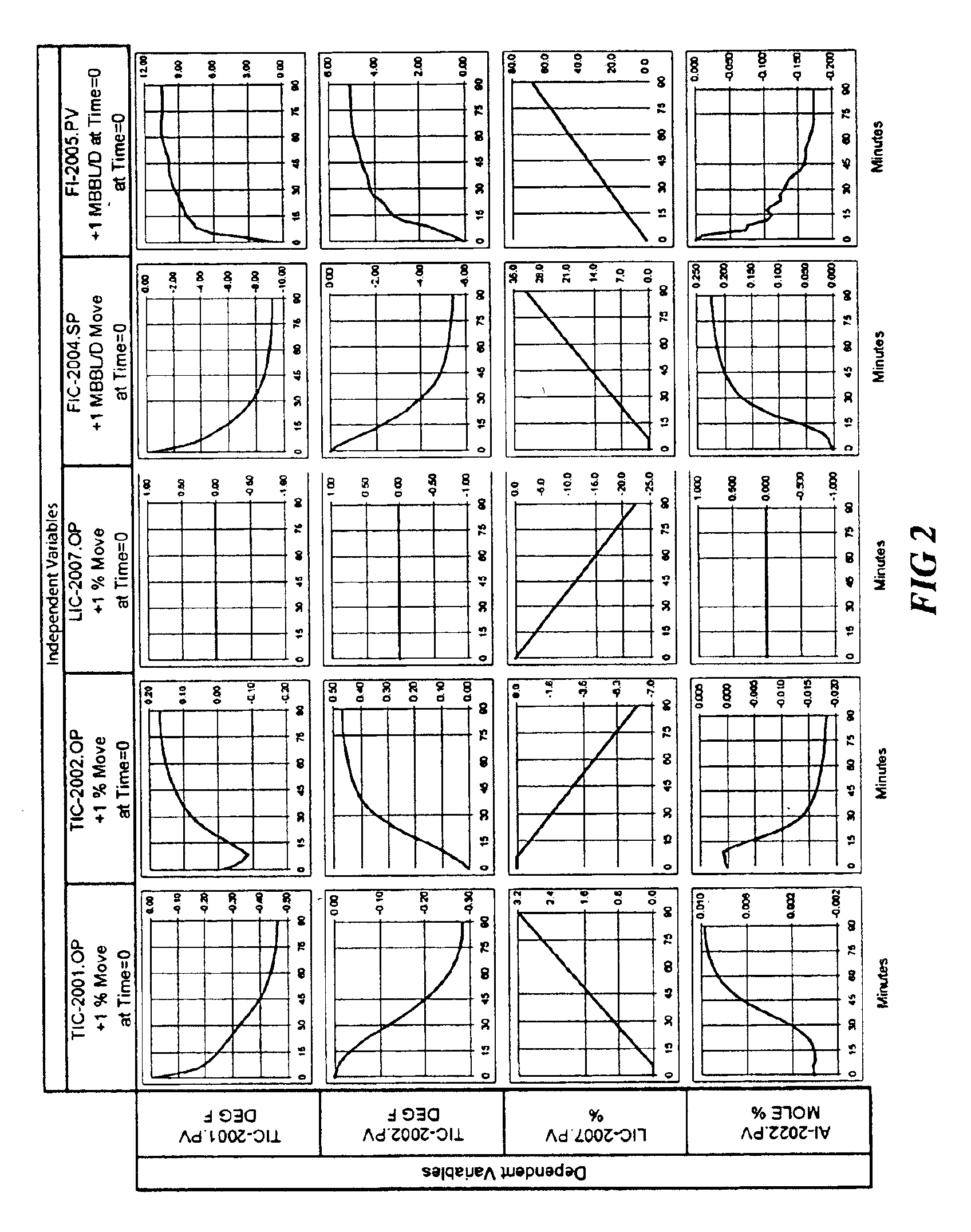Method for removal of PID dynamics from MPC models
a technology of pid dynamics and mpc models, applied in the direction of adaptive control, electric controllers, instruments, etc., can solve the problems of limited use of mpc technology, mpc models have not been used in creating training simulators, and it is difficult to authenticate training
- Summary
- Abstract
- Description
- Claims
- Application Information
AI Technical Summary
Benefits of technology
Problems solved by technology
Method used
Image
Examples
Embodiment Construction
[0028]The invention is a method used in conjunction with model predictive control for removing the dynamics of PID controllers from MPC controllers.
[0029]An MPC process model is a set of linear equations so it should be mathematically possible to interchange any independent variable with a dependent variable provided a relation exists between the independent and dependent variable. A candidate set for that transformation is the set point (independent) for a PID controller and the associated valve position (dependent) for that PID controller.
[0030]An MPC controller is often based on a linear model of a process system. Although the invention to be described here has applications in many fields the examples used will be from chemical and refinery process applications.
[0031]There are two types of variables in any system; the independent variables and the dependent variables. The independent variables are inputs to the system. The independent variables are further divided into manipulate...
PUM
 Login to View More
Login to View More Abstract
Description
Claims
Application Information
 Login to View More
Login to View More - R&D
- Intellectual Property
- Life Sciences
- Materials
- Tech Scout
- Unparalleled Data Quality
- Higher Quality Content
- 60% Fewer Hallucinations
Browse by: Latest US Patents, China's latest patents, Technical Efficacy Thesaurus, Application Domain, Technology Topic, Popular Technical Reports.
© 2025 PatSnap. All rights reserved.Legal|Privacy policy|Modern Slavery Act Transparency Statement|Sitemap|About US| Contact US: help@patsnap.com



